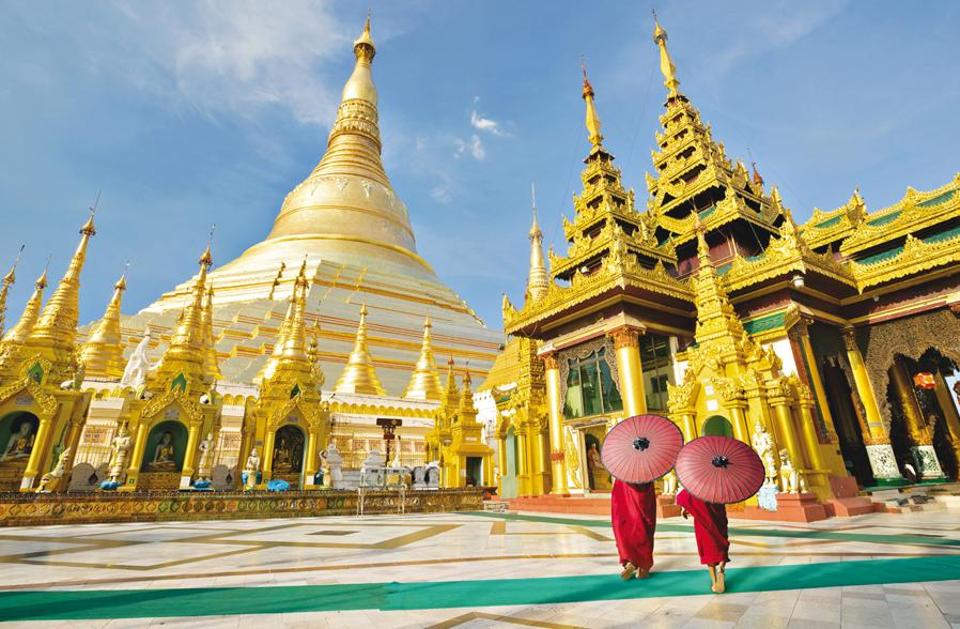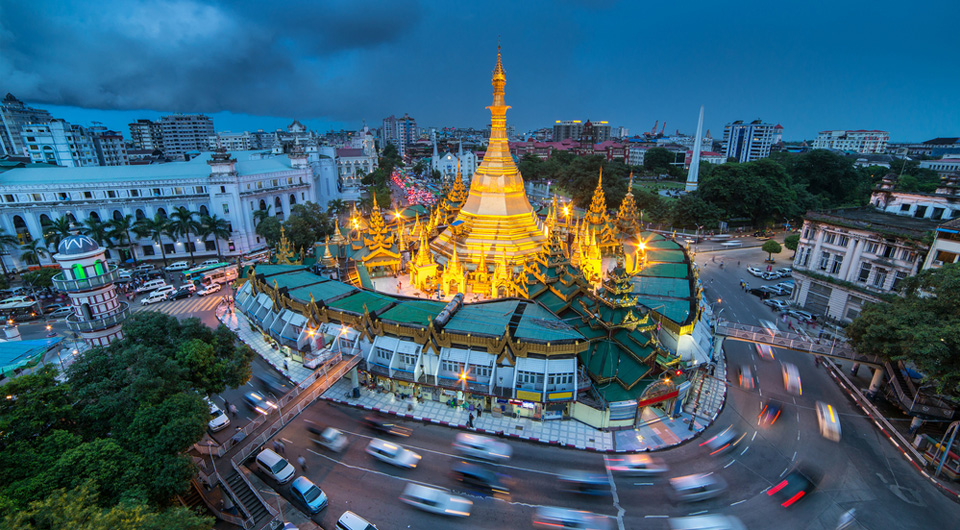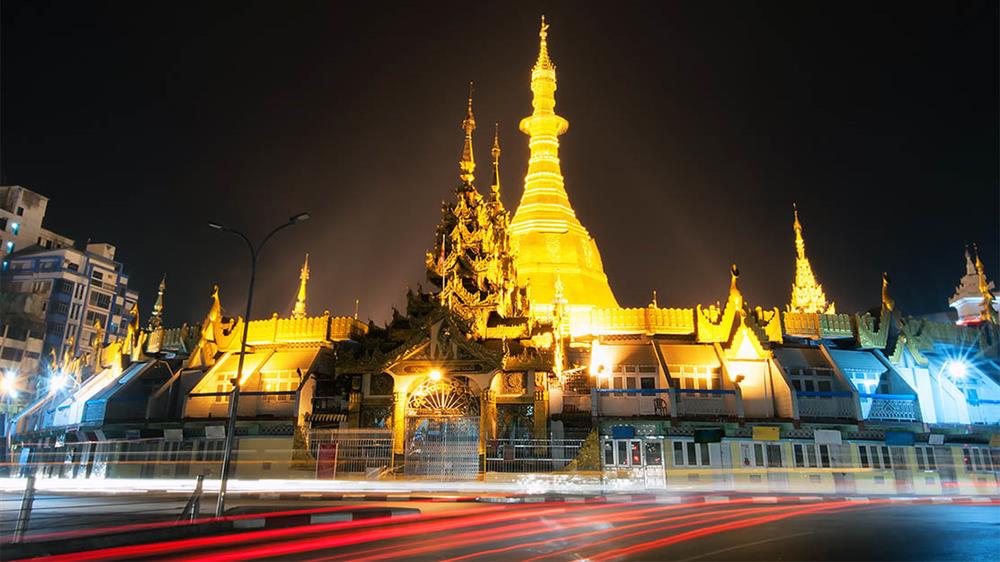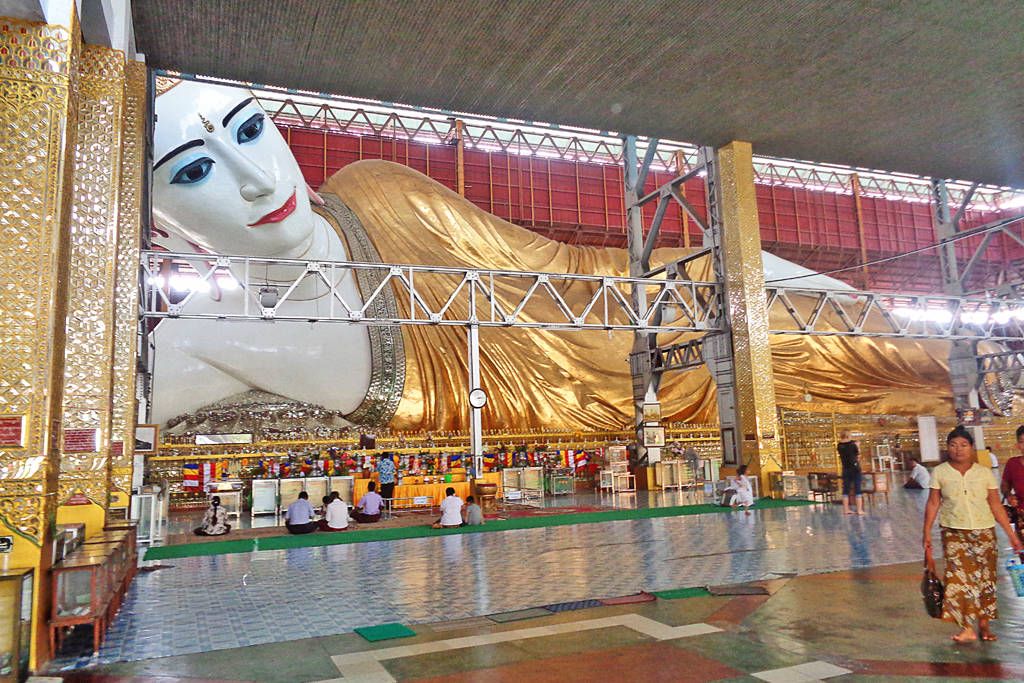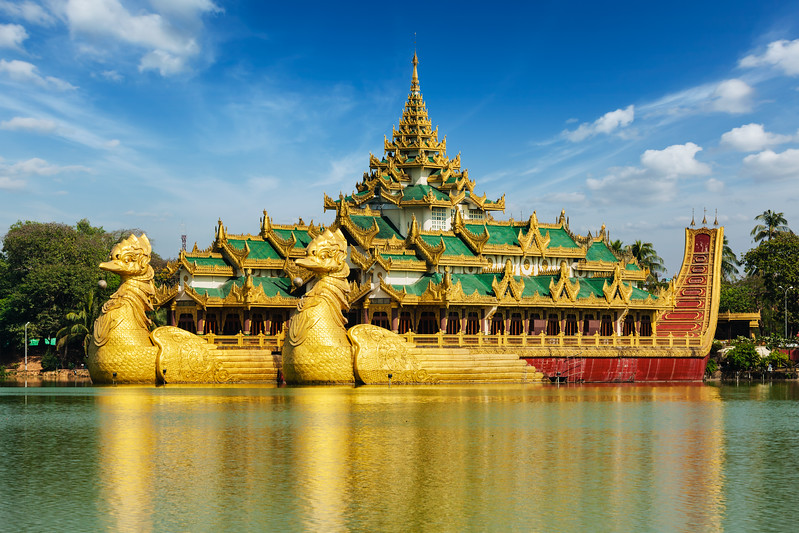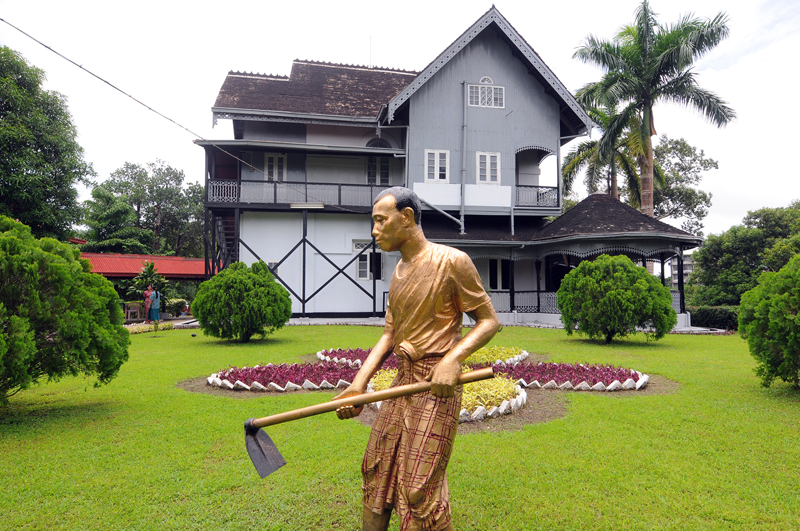Yangon
Yangon (formerly known as Rangoon) is a former capital of Myanmar (Burma) and the capital of Yangon Region until it was superseded by Naypyidaw in November 2005. Yangon is also the main gate way to Myanmar by Air and Sea.
Yangon has earned the name ‘Garden City of the East’ because of ever green and cool with lush tropical trees, shady parks and beautiful lakes.
Although Yangon’s infrastructure is undeveloped compared to that of other major cities in southeast Asia, it now has the largest number of colonial buildings in the region. So, a mix of colonial architecture, modern high-rises and gilded Buddhist pagodas define its skyline.
The pride of Yangon is the world famous Shwedagon Pagoda, the landmark of Myanmar. The golden dome rises 98 meters above its base and is covered with 11 tons of pure gold. The city’s other notable religious sites include the Botataung and Sule pagodas, both housing Buddhist relics.
Full day or half a day of Yangon city sightseeing is advised; the highlight being, of course, the Shwedagon Pagoda, Chauk Htat Gyi reclining Buddha, Sule Pagoda, Botahtaung Pagoda and shopping trip to Boyoke (Scott) Market which is closed on gazetted Holidays and every monday.
There are also many attractive places around Yangon, where people can go on day-trips; such as Thanlyin, Bago, KyaikHtiyoe….
Almost all International Airlines serving Myanmar fly to Yangon International Airport.
Shwedagon Pagoda
Shwedagon Pagoda was built during the time of Buddha and the area around the pagoda, modern Yangon, has been settled since then. For every visitors, local or foreign, the purpose of their journey is incomplete if they miss to visit Shwedagon Pagoda.
According to a legend, this massive bell-shaped 328 feet (100 meter) high stupa was enshrined with eight strands of hair-relics of the last Buddha, as well as relics of three previous Buddhas. The Pagoda platform occupies an area of 14 acres (5.6 hectares), covered with religious buildings of all shapes and sizes. Some are built at the base of the stupa, others at the outer rim. It is an amazing architectural work of Myanmar people. Surrounding smaller stupas and images as well as stairways, approaching the pagoda from four cardinal directions, feature works of traditional Myanmar art. Stalls along the stairways sell local souvenirs including toys and carvings, and flowers and incense to offer.
Sule Pagoda
Sule Pagoda is located in the heart of downtown Yangon, occupying the center of the city and an important space in contemporary Burmese politics, ideology and geography. According to legend, it was built before the Shwedagon Pagoda during the time of the Buddha, making it more than 2,500 years old. Burmese legend states that the site for the Shwedagon Pagoda was asked to be revealed from an old nat who resided at the place where the Sule Pagoda now stands.
It can be reached through four entrances of the four stairways facing four cardinal directions or by two overhead bridges.
Botataung Pagoda
The Botahtaung Pagoda is situated way downtown beside the Yangon River. The Pagoda overlooked the pleasant water front of the river.
The Botataung Pagoda was named after the thousand military leaders who escorted relics of the Buddha brought from India over two thousand years ago. The meaning of Bo is “leader” and tahtaung is “a thousand”. It was built almost in the same time as Sule Pagoda and Shwedagon Pagoda over. 2500 years ago. The name of the pagoda was originally Kyaik-de-att. which was a Mon name.
The Botataung Pagoda is hollow inside and you can walk through it. It’s a sort of mirrored maze inside the pagoda with glass show-cases containing many of the ancient relics and artifacts which were sealed inside the earlier pagoda. Above this interesting interior. the golden pagoda spire rises to 40 metres (132 feet).
Chaukhtatgyi Pagoda
Chaukhtatgyi Buddha Temple is the well-known Buddhist temple in Yangon, Myanmar. It houses one of the most revered reclining Buddhaimages in the country. The Buddha image is 66 metres (217 ft) long, and one of the largest in Burma. Buddha image is wearing a golden robe; the right arm of the Buddha is supporting the back of the head. The Reclining Buddha image is decorated with very expressive colors, white face, red lips, blue eye shadow, golden robe and red finger nails.
The soles of the feet contain 108 segments in red and gold colors that show images representing the 108 lakshanas or auspicious characteristics of the Buddha.
This temple also contains a mural of a long line of followers of the Buddha, with the Buddha and the first few of his followers appearing to come out of the painting.
Kandawgyi Lake
Kandawgyi Lake is one of two major lakes in Yangon, Burma (Myanmar), located east of the Shwedagon Pagoda. It is also known as Royal Lake, this artificial lake, built by the British as a reservoir and is most attractive at sunset, when the glittering Shwedagon is reflected in its calm waters.
The Lake is best known for its Karaweik (located at its southwestern tip), a replica of a traditional Burmese royal barge(It houses a buffet restaurant today).
There is also a boardwalk around the southern edge of the lake, affording a better view than that from the gardens.
It is approximately 5 miles (8 km) in circumference, and has a depth of 20 to 45 inches (50 to 115 cm)
It was recently renovated, and foreigners must pay an entrance fee.
General Aung San’s House
Located at Natmauk Road (near the German embassy) was the house where General Aung San lived, with his wife and three children, shortly before he was assassinated. The house is still in original condition, with many interesting items on display.



